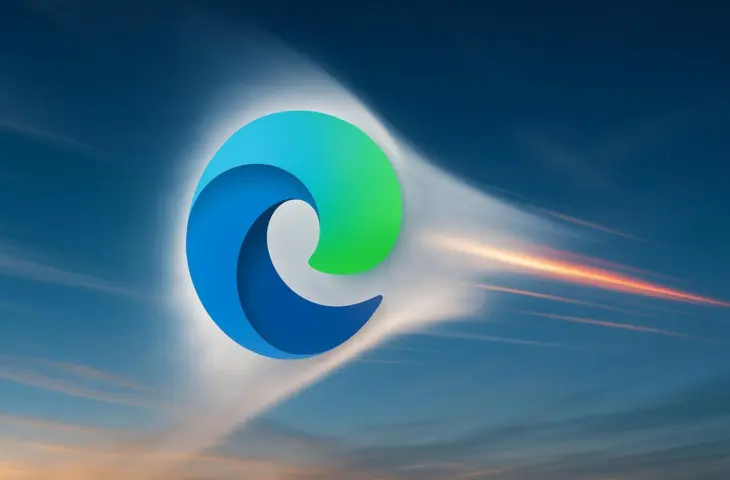The Edge browser has become much faster thanks to the move to a new web engine. The browser achieves loading times of under 300 milliseconds.
Microsoft proudly announces in a blog that its Edge browser has broken a speed record. The browser was the first to achieve a First Contentful Paint (FCP) time of under 300 milliseconds. This illustrates the general performance improvements that Microsoft is implementing in Edge.
With a new WebUI engine, Microsoft wants to noticeably shorten the loading times of the browser, and that is paying off. The browser now loads an average of 40 percent faster than before for thirteen different functions, Microsoft reports.
Speed boost
For example, the settings menu opens faster and users can navigate more smoothly. The read-aloud function also starts up faster and supports more languages and voices. With split screen, users can switch between windows more smoothly without any noticeable waiting time. The workspaces load faster, allowing users to get started more quickly.
The FCP that Microsoft reports indicates how quickly the first content of a page appears. Research shows that users are more likely to drop out if the loading time is longer than 400 milliseconds. With this update, Microsoft wants to avoid users waiting too long and achieves a scoop with loading times of under 300 milliseconds.
Further Optimizations
The work is not yet finished. Microsoft is planning further optimizations for other functions in the coming months, such as Print Preview and extensions. The company wants to offer a smooth surfing experience with these updates. Users can provide feedback on the performance themselves via the Edge settings.
read also
Microsoft Edge gets AI-powered search history with typos
Whether that will give Edge a boost in market share remains to be seen. With a global market share of five percent, Edge is the third largest browser, but far behind Safari and Chrome. Thanks to the link with Windows, Edge does better in the desktop market with thirteen procent, but more Windows users still prefer to install Chrome than to use the default browser.
